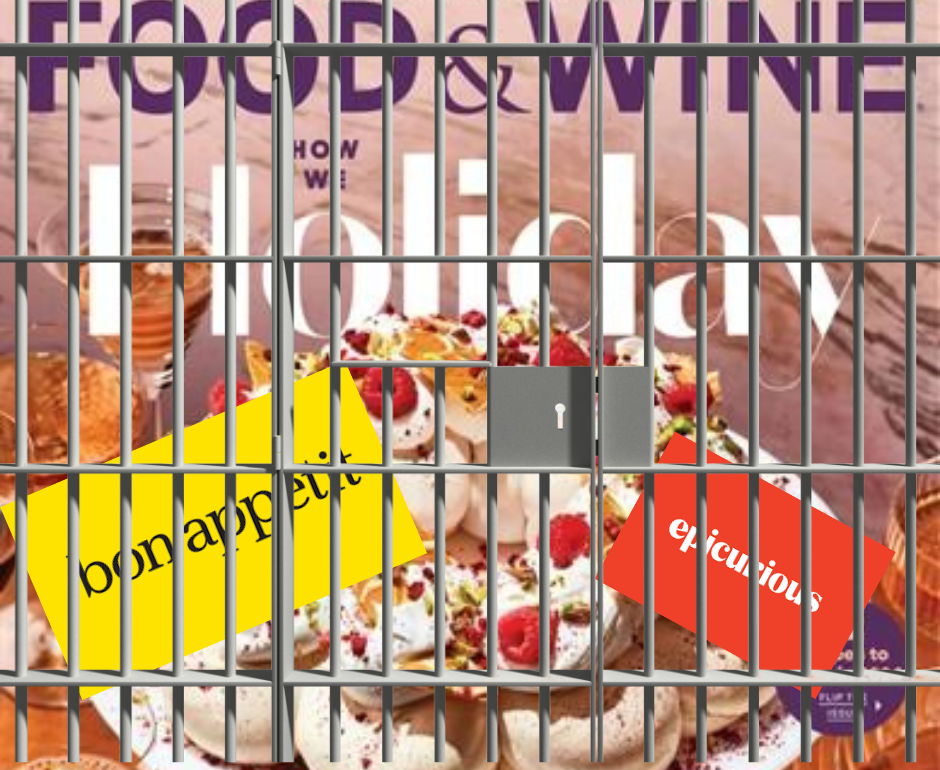
The unfortunate part of this coverage is that it’s the least interesting part of the correctional culinary experience. The culture and offerings of a prison chow hall — as well as what incarcerated people make on their own with commissary items — don’t get nearly enough attention, mostly because legacy food media has overlooked it for years, to everyone’s detriment.
But food culture doesn’t include everyone. There’s not one mention of prison fare in Bon Appetit and Food and Wine’s online archives. There are a few historical references to prison but no coverage of what’s happening in the places where over two million people take their meals each day.
Legacy food media’s exclusion of prison from its coverage contributes to our sprawling criminal legal system, one that has grown so wide that it ensnared the son of the sitting President and the former president and current Republican front-runner. Forget the claims of a two-tiered justice system; there’s only one — and it’s a Venti.
Subscribing to one of these publications might lead a reader to believe that there isn’t one place where 6 million meals are served every day — three hots for each soul in confinement. The most effective way to support the prison industrial complex isn’t to patronize prison profiteers like phone companies and commissaries. It’s to ignore it, to permit its opacity. Mass incarceration flourishes because we allow these silos to persist.
But not every story has to be dreary; prison food doesn’t need to invite only complaints or cold shoulders.
We call it prison labor, but there’s a culinary training program in every single facility and it makes prison cooks some of the most inventive creators out there. Unfamiliar ingredients arrive because they’re cheap and cooks scurry to combine them into something palatable — for thousands of waiting maws. Every day in prison plays out like an episode of Chopped, the reality competition on The Food Channel that features weirdo ingredients and a shortened opportunity window. I competed every day. Dried cherries. Pepper jack cheese. Frozen catfish. Tarragon. It became fish patty sandwiches with sauce and cherry chutney. It wouldn’t pass muster at Le Bernardin, but it was the best I could do with the resources I had. That’s not just a Chopped challenge; it’s a lesson for cooking, for prison and for life.
In their cells, inmates use restricted, even forbidden, supplies and even more limited cooking apparatus — often they use only hot water and a hairdryer — to concoct a tasty, even ingenious, meal replacement. They may live at risk of being shanked, but the chance of getting chopped off on the eponymous show is low.
Including prison food in valued food media isn’t a woke agenda. It’s business. Getting food to inmates is a multi-billion dollar industry that spans all 50 states and affects policy in cities and counties, too. If two million people ate a certain type of food every day, these media outlets would cover that cuisine. That many people eat that stuff daily but there’s no conversation about it in online places where we’re talking about food.
Food contains multitudes. Food media doesn’t. Stories about prison food shouldn’t be kept for holiday comparisons. They should be welcomed year-round. It’s a big table. Scootch over.
This post was originally published on this site be sure to check out more of their content.









